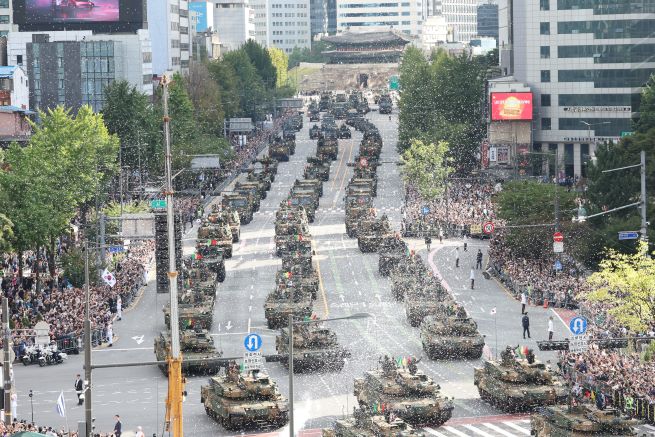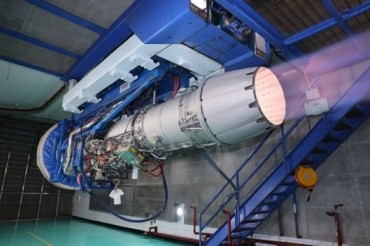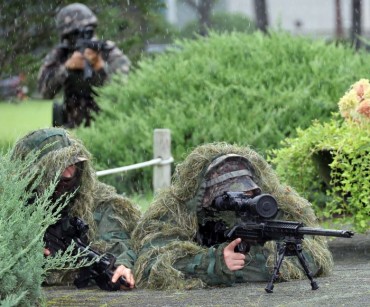
South Korea showcased its most formidable missile, the Hyunmoo-5, for the first time on Tuesday. The ground-to-ground ballistic missile, dubbed a monster for its size, had been shrouded in secrecy due to its strategic importance.
SEOUL, Oct. 1 (Korea Bizwire) – South Korea showcased its most formidable missile, the Hyunmoo-5, for the first time on Tuesday in a clear signal to North Korea amid ongoing nuclear and missile threats. The unveiling took place during a ceremony at Seoul Air Base in Seongnam, just south of the capital, marking the country’s Armed Forces Day.
The Hyunmoo-5, a ground-to-ground ballistic missile described as a “monster” due to its massive size and strategic significance, is central to South Korea’s defense strategy. Capable of carrying an 8-ton warhead, the missile is designed to destroy fortified underground bunkers and is a key element in the country’s plan to respond to a major North Korean attack.
Two mobile launchers carrying the Hyunmoo-5 were displayed at the ceremony, among a range of advanced military hardware. The missile, housed in a canister estimated to be 20 meters long, is known for its high power and precision, capable of targeting any location within North Korea.
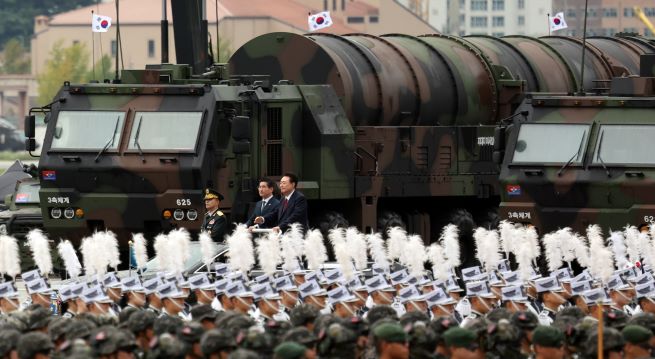
President Yoon Suk Yeol (C) passes by a transporter erector launcher carrying the Hyunmoo-5 ballistic missile during a ceremony marking Armed Forces Day on Oct. 1, 2024, at Seoul Air Base in Seongnam, just south of the capital. (Pool photo) (Yonhap)
South Korea has developed a series of Hyunmoo missiles, both ballistic and cruise variants, with the Hyunmoo-4 being unveiled during last year’s Armed Forces Day. However, the Hyunmoo-4 can only carry a payload of around two tons, making the Hyunmoo-5 a significant upgrade in terms of firepower.
In another demonstration of strength, a U.S. B-1B heavy bomber flew over the air base, accompanied by two F-15K jets, symbolizing the continued U.S. commitment to South Korea’s security. North Korea, in response, had previously warned of taking “corresponding” action against the deployment of U.S. strategic assets in the region.
Approximately 5,000 troops and hundreds of pieces of military equipment were part of the Armed Forces Day ceremony, celebrating the 76th anniversary of the founding of South Korea’s military. Special operations forces performed aerial infiltration drills, while Apache attack helicopters launched flares and executed evasive maneuvers, all set to the iconic “Ride of the Valkyries.”
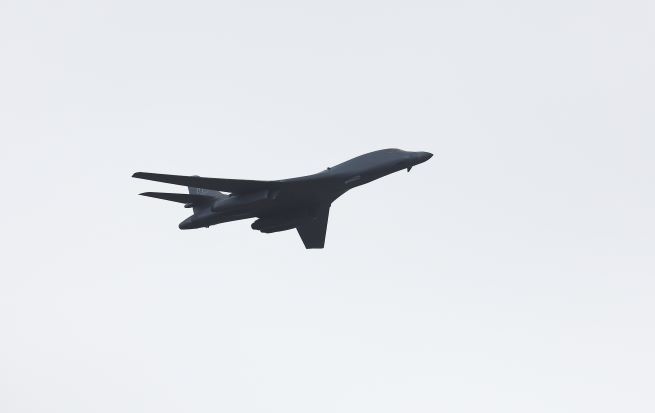
A U.S. B-1B heavy bomber flies over Seoul Air Base in Seongnam, just south of Seoul, for the Armed Forces Day ceremony on Oct. 1, 2024. (Yonhap)
The event also highlighted South Korea’s cutting-edge air assets, including the under-development KF-21 fighter and F-35A stealth jets. The Air Force’s Black Eagles aerobatic team added excitement with a series of intricate air maneuvers.
Later in the day, a military parade took place in downtown Seoul, marking the second consecutive year of such an event under the Yoon Suk Yeol administration. The parade featured K2 tanks, K9 self-propelled howitzers, and other military hardware, which moved through central Seoul from Sungnyemun Gate to Gwanghwamun Square. Aircraft, including Apaches and F-35As, flew overhead while spectators lined Sejongno Street to witness the display of military might.
This year’s Armed Forces Day ceremony comes amid heightened tensions with North Korea, which has recently ramped up provocations, including missile launches and disclosing its uranium enrichment facility ahead of the upcoming U.S. presidential election. North Korea has also sent balloons carrying waste materials across the border.
The South Korean defense ministry stated that the ceremony aimed to demonstrate the country’s “overwhelming” ability to retaliate against potential enemy provocations, showcasing the strength of its three-axis deterrence system. This system consists of the Korea Massive Punishment and Retaliation plan, which targets North Korea’s leadership in the event of conflict; the Kill Chain preemptive strike platform; and the Korea Air and Missile Defense system.
This year’s event also featured an expanded lineup of military assets, including manned and unmanned operations, such as quadruped robots and unmanned submarines and surface vehicles.
Armed Forces Day, celebrated annually on October 1, honors the service of South Korea’s military personnel and marks the anniversary of the country’s military founding.
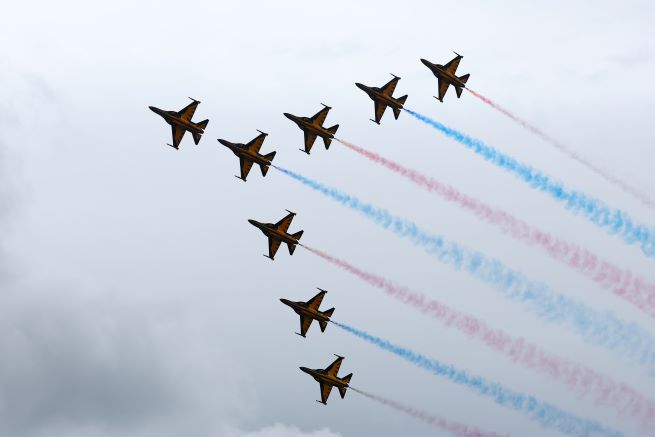
The Air Force’s Black Eagles aerobatic team performs over Seoul Air Base in Seongnam, just south of Seoul, on Oct. 1, 2024. (Yonhap)
Image credit: Yonhap / photonews@koreabizwire.com


